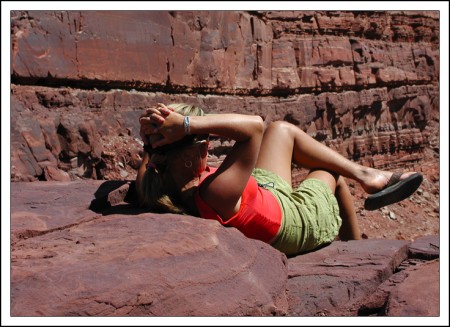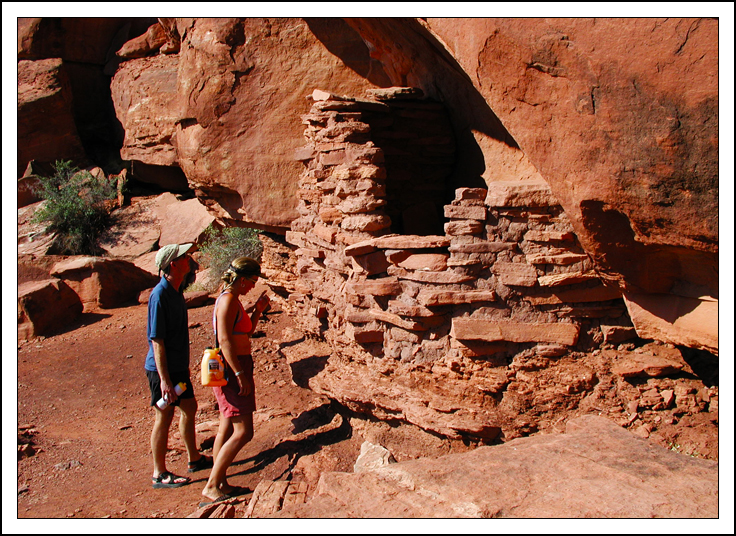There is a somber mood in the boats today. Even amongst the crew. Extra time was spent, as we broke camp, to secure the rocket boxes and jerry cans, the jack pads and ditty bags. The chickie line—yellow rope running around the perimeter of each oarboat, used as a hand grip in violent water—was closely inspected by Arlo for frays and loose knots. Then the boats and oars were carefully examined for any hidden damage.
After breakfast, Arlo gave a safety talk. “If we get a man overboard, let the crew come to you. We’ll pull you out. Do not try and swim towards the boat. No one in the boat should attempt a rescue. You’ll only make it worse because then we’ll have to pull two of you out. Stay on your back. Feet forward. And, most importantly, do not panic.”
It’s always a little disconcerting when someone tells you, with a certain amount of gravity, to not panic. But then again, one only has to remind oneself that between here and the end of our journey, the edge of Lake Powell, the river drops 425 feet giving us whitewater every bit as hair-raising as anything in the Grand Canyon.
As Frederick Dellenbaugh wrote as the Powell Expedition prepared to tackle this same stretch of river, “…the life preservers were inflated, and casting off from Camp 62 we were borne down with the swift current. The water was muddy, of a coffee-and-cream colour, and the river was falling.”
Nothing has changed.








Recent Comments